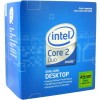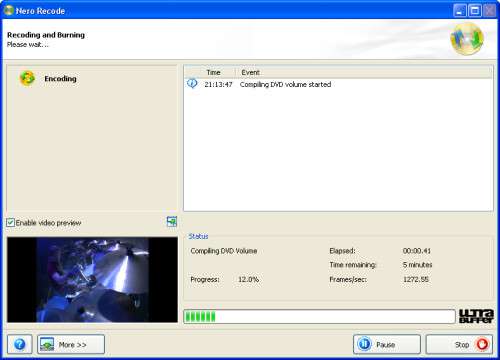- Qualcomm Launches Snapdragon 4 Gen 2 Mobile Platform
- AMD Launches Ryzen PRO 7000 Series Mobile & Desktop Platform
- Intel Launches Sleek Single-Slot Arc Pro A60 Workstation Graphics Card
- NVIDIA Announces Latest Ada Lovelace Additions: GeForce RTX 4060 Ti & RTX 4060
- Maxon Redshift With AMD Radeon GPU Rendering Support Now Available
Intel Core 2 Duo E7200 – The New Budget Superstar?

At 2.53GHz and $133 USD, the E7200 promises to become the new Dual-Core budget superstar. After taking a hard look at the upcoming offering, we would have to readily agree. Overclocking only sweetens the deal further, with 3.0GHz on stock voltages being more than possible. We have a winner!
Page 4 – Multi-Media: DiVX (VirtualDub), Nero Recode
DivX 6.7
One area where Intel’s 45nm processors excel is with multi-media encoders that utilize the SSE4 instruction set. Beginning with DivX 6.6.0, the set is fully supported and will make a huge difference when using the “Experimental Full Search” algorithm to encode.
When using DivX 6.6.0+, you will notice that the “Experimental Full Search” is left at Disabled by default. This, as we found out, is a good thing since it does indeed take longer overall. If you are a media enthusiast who cares a lot about quality and doesn’t mind the extra wait, then the Experimental Full Search is the route to take. The end result may vary depending on certain factors, such as original video codec, original video quality and video length.
For our testing, we are using a 0.99GB high-quality DivX .AVI of Half-Life 2: Episode Two gameplay. The video is just under 4 minutes in length and is in 720p resolution, which equates to a video bit rate of ~45Mbps, not dissimilar to standard 720p movies. We converted the video two different ways.
First, we encoded the video at the same resolution but a lower quality, so as to achieve a far more acceptable file size (~150MB). The second method is encoding of the same video, but to a 480×272 resolution, similar to what some mobile devices use.

Thanks to the addition of the SSE4 instruction set on the E7200, it storms past the E6750, despite having a slightly slower frequency. Bear in mind though, if the “Experimental Full Search” algorithm was not selected, results would scale more with frequency, regardless of what SSE version is included.
It is fun to note, though, that with the Full Search mode, the E7200 actually proves faster than the Quad-Core Q6600 in our 720p scenario.
Nero Recode
Where video conversion is concerned, one of the applications I’ve grown to enjoy over the years is Nero Recode. Though its export options are extremely limited, they offer high image quality and decent file weight. For our testing, we are using Nero Recode 2 which is included with the Nero 8 Ultra Edition.
Unlike DivX, Nero Recode does not support the SSE4 instruction set, which I consider to be unfortunate, since real differences can be seen, as evidenced above. In a meeting with Nero last fall, I was told that while the application lacks SSE4 support, it does have what it takes to fully take advantage of Multi-Core processors, and to them, that matters more.
For this test, we’ve first ripped our copy of our concert DVD, Killadelphia, by Lamb of God. The original DVD rip weighs in at 7.7GB, but we are using Nero to reconvert it to 4.5GB so that it will fit on a normal-sized DVD to use as a backup. Our “mobile” test consists of converting the main concert footage to the same resolution an Apple iPod uses (480×272) which results in a 700MB file.

Since Nero does not support SSE4 as previously mentioned, results shown here scale well with frequency. Quad-Cores are what make the big differences here.
Support our efforts! With ad revenue at an all-time low for written websites, we're relying more than ever on reader support to help us continue putting so much effort into this type of content. You can support us by becoming a Patron, or by using our Amazon shopping affiliate links listed through our articles. Thanks for your support!







